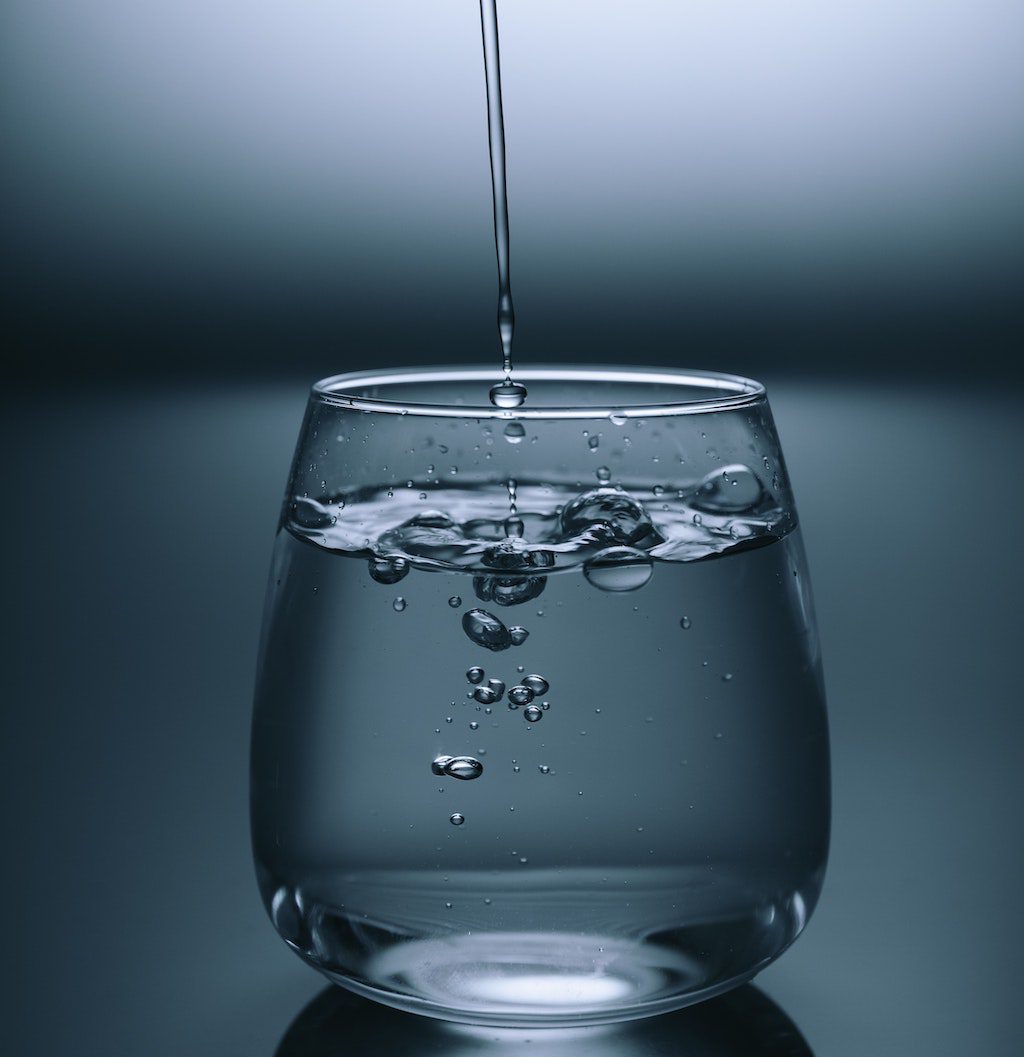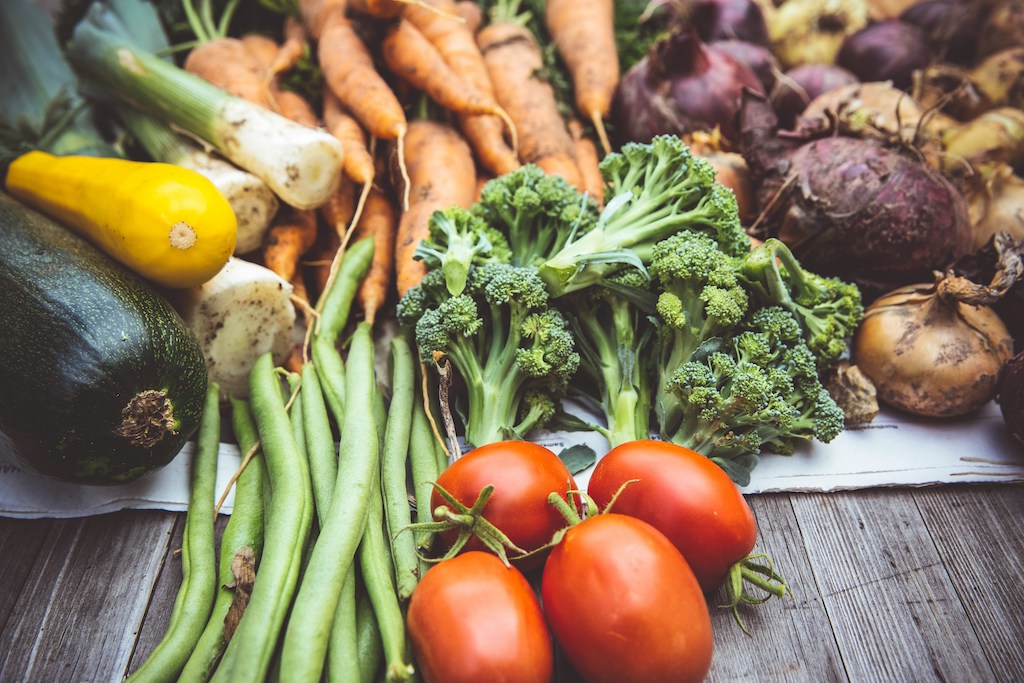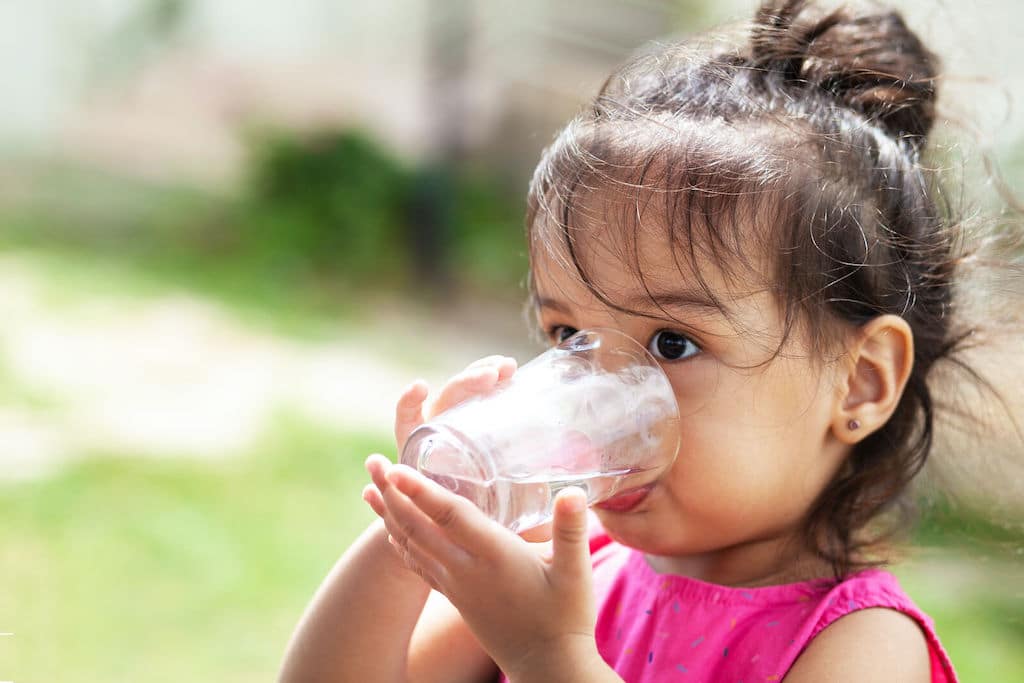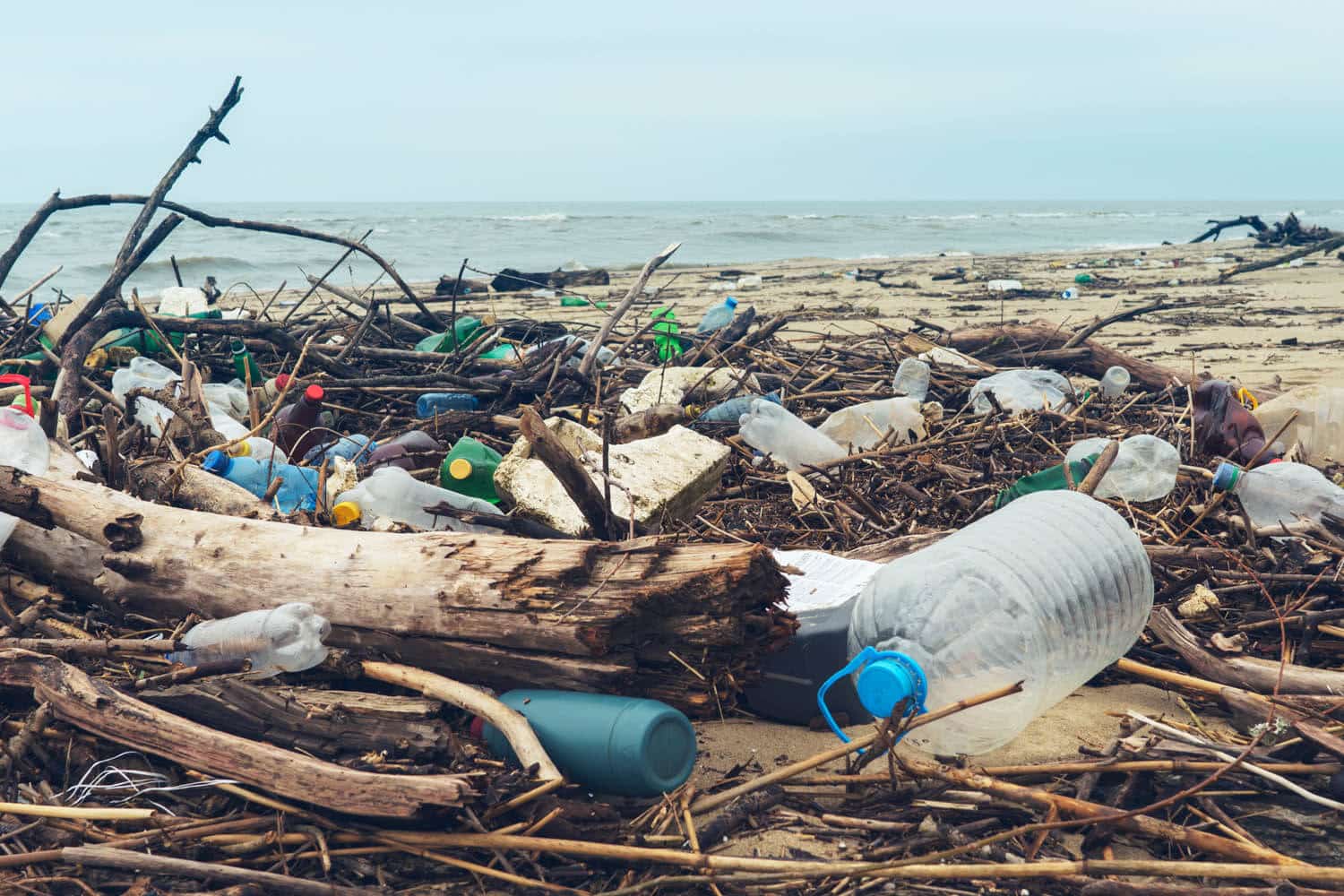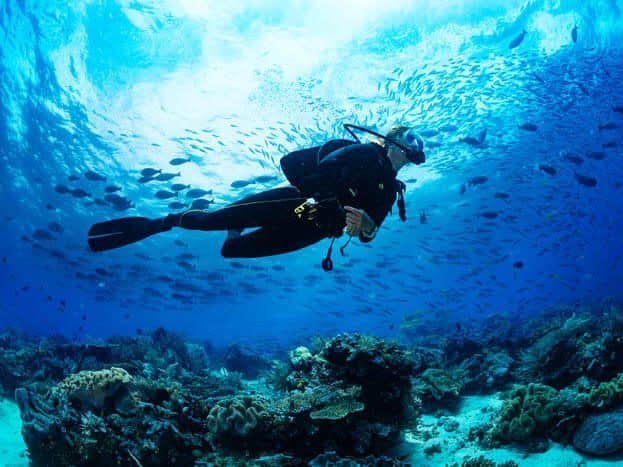Drinking water filters are a safe solution to protect your family’s health from plastic and other pollutants.
Water comprises the majority of the planet and our bodies, and without it, there would be no life on Earth. Water is so important that the United Nations recognizes it as a Human Right. Unfortunately, water is not guaranteed to all: An estimated 2 billion people do not have access to safe drinking water worldwide, and 800 million do not have access to any reliable drinking water source. Ultimately every person, everywhere, is at risk of water scarcity; new research shows that global fresh water demand will outstrip supply by 40 percent by 2030.
Human-caused environmental change is exacerbating clean water issues due to the widespread production of manmade toxic chemicals and substances such as plastics; increasing climate-driven droughts; overuse of water resources by agriculture and industries; and sea-level rise. As a result, fresh waters traditionally tapped for drinking—including lakes, reservoirs, rivers, springs, and underground aquifers, and the rain and snow which feed them, are increasingly under threat.
A historic lack of strong water protections, systemic racism and classism, and uneven investments made to public health have led to injustices in access to safe drinking water for many Americans. In the U.S., tens of millions of people get their drinking water from unsafe and unreliable sources. Are you one of them? Read more to learn how to find out what’s in your water and how to find a water filter that can ensure your access to safe drinking water, protecting your family’s health.
Plastic Bottled Water is Not a Solution

During times of water trouble, including contamination, federal, state, and local governments have commonly provided and/or recommended that affected communities use bottled water. However, bottled water is not the safest choice. Here’s why: Most bottled water is just repackaged tap water without additional treatment (and only added plastic and plastic chemicals). And toxic chemicals manufactured into plastic water bottles leach into water. Most plastic water bottles are made of PET (polyethylene terephthalate) plastic. At least 150 chemicals are known to leach from PET plastic beverage bottles into the liquid inside, including heavy metals like antimony and lead, and hormone-disruptors like BPA. Plastic PET bottles are even more likely to leach toxic chemicals if they are recycled, or are kept in warm environments, are exposed to sunlight, or are reused.
• There is little-to-no regulation of the water inside plastic bottles. The Food and Drug Administration (FDA) regulates bottled water, often relying on outdated state and local testing and enforcement. The FDA holds bottled water to EPA standards on an as-needed basis only if contaminants are detected.
• Plastic particles are numerous and widespread in bottled water. If you drink bottled water you’re consuming at least twice as many plastic particles in your water as those who drink only tap water. Plastic particles are now found in human blood, veins, lungs, and placentas, and feces.
• Plastic bottled water has high economic costs. One gallon of bottled water costs about $7.00–$8.00. If the average person uses about five gallons of water per week for drinking and cooking, that comes to about $1,820–$2080 per year if bottled water is used. In comparison, tap water costs $0.002–$0.008 per gallon on average—that’s $0.52–$2.08 per year. With a filter, tap water is still much less expensive than bottled.
• Plastic bottled water has high human and environmental costs. Plastic water bottles shed plastic particles not only into human bodies but also into the environment. Most plastic water bottles are not recycled. Hazardous chemicals are released throughout plastics’ toxic existence. Plastics and petrochemicals cause massive injustice on the front lines of their production, transportation, disposal, and use. There are also high energy costs of producing plastic bottled water.
• The plastic water bottle industry worsens global water issues. Fresh water is extracted from the Earth to fill billions of plastic bottles a year, and this poses a threat to drinking water resources while driving the plastic pollution crisis. UN research finds that the industry’s growth helps distract attention and resources away from funding the public-water infrastructure desperately needed in many countries, according to the report.
Common Drinking Water Contaminants
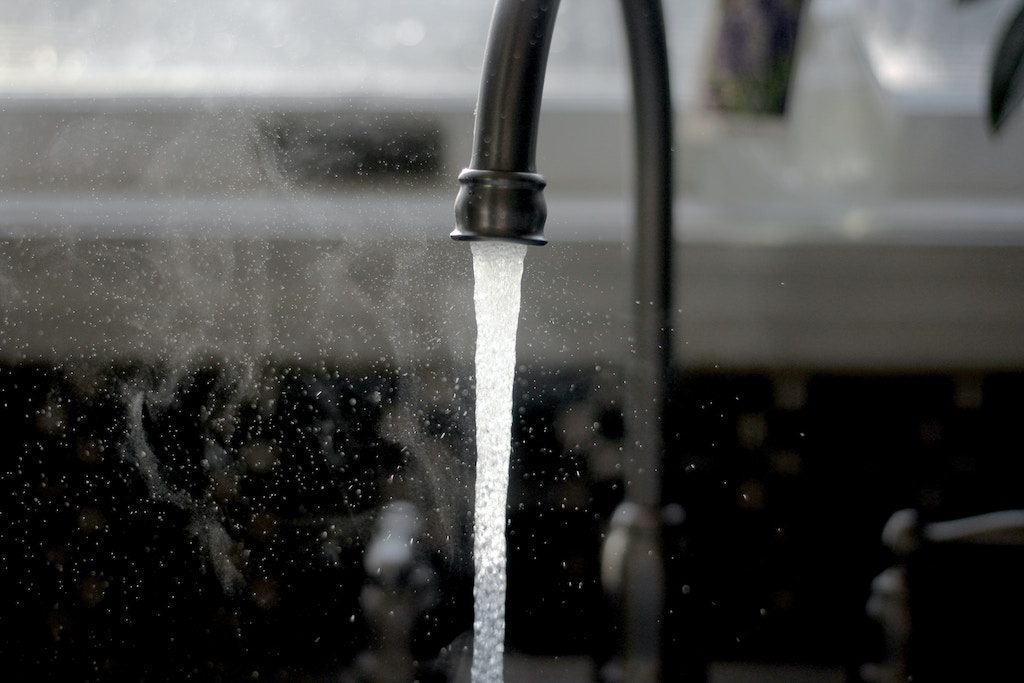
Tap water is generally considered safe for consumption across the U.S., thanks to federal and state standards regulating its quality (which is sadly not the case in all areas of the world). However, just because standards exist does not necessarily mean all people in the U.S. have reliable access to clean water. Further, legal limits for many drinking water contaminants were established decades ago and many are based on outdated science, potentially putting peoples’ health at risk.
In the U.S., people who are Black, Indigenous, People of Color (BIPOC); low-income; and/or reside in rural areas are most likely to face water insecurity as the result of longstanding environmental injustices. Drinking water systems that continually violate the Safe Drinking Water Act—the country’s federal health-based standards for public drinking water—are 40% more likely to be located in communities of color. Privately tapped well water, which is common in rural areas, is not regulated by the Safe Drinking Water Act.
State standards further regulate the levels of contaminants that are permitted to exist in drinking water. Public water suppliers must treat water to remove contaminants, such as toxic chemicals, disinfection byproducts, heavy metals, and bacteria, and report their findings to water users. But even after treatment, drinking water may not be fully remediated, or it may contain other contaminants picked up along its delivery route to your home.
A few common drinking water dangers include lead, plastics, and per and polyfluoroalkyl substances (PFAS).
► Lead
Despite widespread understanding of the dangers of lead, an extremely toxic heavy metal that can cause irreversible damage to the brain and body, outdated lead pipes and fittings still deliver water into the homes of an estimated 22 million Americans, across the U.S.. Children, whose brains and bodies are developing, and pregnant people and the fetuses they carry, are particularly vulnerable to the dangers of lead exposure from drinking water and other sources. Even low levels of lead exposure can cause children and those still in the womb to develop brain and nervous system damage, learning disabilities, reduced physical growth, impaired hearing abilities, and blood cell disease. Adult exposure to lead is linked to heart disease, reproductive issues, kidney disease, and other serious health problems.
Thankfully, in 2021 the U.S. government approved $15 billion dollars to begin replacing toxic lead pipes. Communities with the highest lead exposure levels and who face environmental injustice will be prioritized. These federal funds are essential to providing clean drinking water and protecting the health and safety of our families and communities. However, it will take time to replace these lines. As lead pipes are replaced, we need to prioritize replacing these lines with safer materials other than plastic polyvinyl chloride (PVC)—another potent toxic chemical known to harm human health—and ensure impacted communities can access safe filtered drinking water during lead pipe replacement.
► Plastics
While plastic PVC pipes are considered more affordable than well-studied metals like copper, steel, and iron, experts point out that the long-term effects of PVC use are less clear, and could be seriously hazardous. PVC, like all plastics, is known to shed toxic microplastic and nanoplastic particles containing hormone-disrupting chemicals linked to cancers, reproductive and immune system issues, and other health problems in humans, and accumulate in the natural environment. What’s more, PVC is made with hazardous chemicals, including vinyl chloride, a chemical known to cause cancer in humans and poses a serious fire and explosion risk wherever it is manufactured and transported.
PEX (cross-linked polyethylene) is another plastic commonly used to move drinking water that has been found to leach chemicals. Microplastics and nanoplastics are not only a concern when transported in plastic PVC and PEX pipes, but also when piped out from water authorities, which often do not have technology to filter out plastic particles from drinking water sources. Well water, especially that drawn from groundwater, is also increasingly polluted by microplastics and nanoplastics, which travel through Earth’s waters, air, and soils after shedding from the plastics people make and use.
► PFAS
In March, the U.S. Environmental Protection Agency (EPA) announced the country’s first-ever proposed guidelines for limiting six common types of per and polyfluoroalkyl substances (PFAS) “forever chemicals” in drinking water. PFAS are a class of more than 9,000 hazardous chemicals widely used in industrial processes and consumer products, especially plastics—including those used to make water pipes.
PFAS also commonly leach out from under landfills and other industrial sites into soils and water sources. As a result, at least 200 million Americans currently have detectable levels of PFAS in their drinking water. These chemicals do not easily degrade and are known to interfere with many human body functions, contributing to risk of cancers, hormone issues, obesity, and many other serious issues.
What’s in Your Water?

All people deserve safe solutions that can increase water equity and enhance their personal autonomy and ability to protect their family’s water sources. The first step to ensuring you and your family have access to the safest water possible is to find out what’s in your water. Here’s how:
- If you’re connected to a public water supply: Learn what water issues may be relevant for your area by typing your zip code into the Environmental Working Group (EWG)’s Tapwater Database. Learn what contaminants exceed EWG’s science-based health guidelines for common drinking water contaminants. You can also check your local water supplier’s annual Consumer Confidence Report (which are required under federal regulations) for up-to-date testing on your local water quality.
- If you’re connected to a private well: Consider getting your home’s drinking water supply tested. Find a laboratory in your state that is certified to do independent water testing. Your local health department may provide private well testing for free. If not listed on your test results, see the EPA’s “List of Drinking Water Contaminants and their Maximum Contaminant Levels (MCL)” with which you can compare your results.
If you do find contaminants in your water, do not panic. There are solutions immediately available to you: Choose filtered, not bottled water.
How to Filter Your Water

Home water filters are an economical, accessible, and healthy choice that can make your home drinking water safer for you and your family. But where to begin? It’s simple. Take the following steps to take to find the right filter for your family:
- Find a filter for your needs. First compare the capabilities of different filter types. The most common home filters include activated carbon, reverse osmosis, and ion exchange water softeners. Some filters can be installed at or beneath your sink (these are called point-of-use filters). Others sit on your countertop and use gravity to draw water through the filter material. And some are used to filter water for your entire house. Each of the filter types removes a different range of contaminants, and each style fits different needs. You may need to use more than one filter to fully remove contaminants from your drinking water, though note that many filters are certified to remove dozens of contaminants.
- Find a filter for your budget and space. Consider your budget and how much space you have available in your house for a water filtration unit. At the most affordable price range, you’ll find pitcher filters (some are available in glass housing) that sit on your counter or can be stored in your fridge, faucet-mounted filters, and faucet-integrated filters, which often cost under $50. Next, there are on- and under-counter filtration units, which usually cost between $100 to $300. Pricier still are whole-house filtration units, which can run in the several-thousand dollar range. Filters for pitchers need to be changed every four months or so, while larger units need filter changes every six months to one year. Filters may cost $10–$100, depending on the filter you choose.
- Find a filter near you. There are hundreds of filters available online and often in local hardware stores. To narrow down your search, seek out third-party filter testing, particularly NSF/ANSI 53 (and optionally 42 and 401). Such testing helps ensure the filter you are considering is effective at removing contaminants of concern.
- Install, use, and maintain your filter. Once you set up your filter, you need to maintain it to optimize its use. Pitcher-type filters require filter changes every three to four months. Under-sink, faucet, and whole-house filters require change every six months to one year. You can find filters for maintenance online or in your local hardware store.
We suggest watching this helpful video EWG, which breaks down the process of finding a filter that works best for you and your family.
In addition to filtering your water, it’s important to store your drinking water in safe and healthy containers. While some water filters may be made of plastic and/or have plastic components, these are still safer than bottled water. Ideally, however, we recommend transferring your filtered water to a non-plastic container for storage before use. Some healthy options include glass, stainless steel, and ceramic. Such containers can safely be kept refrigerated or on your countertop.
Choose Filtered Not Bottled Water

Scientists, communities, individuals, and organizations are now advocating for federal and state governments to take more serious steps to protect drinking water and public health. In the meantime, you can best protect your family’s health by choosing Filtered Not Bottled water.
